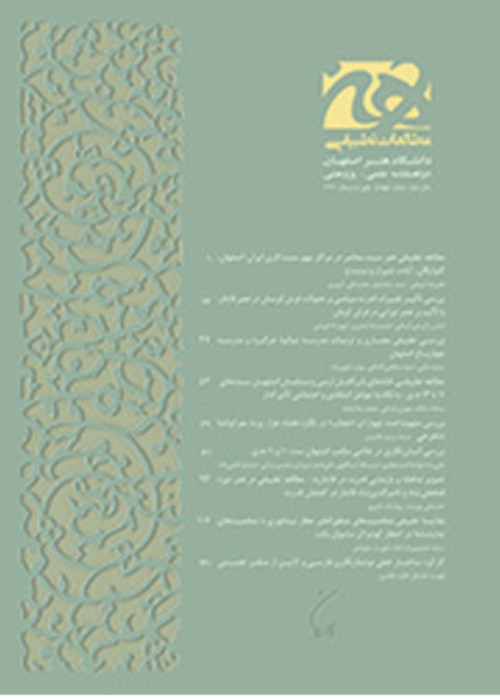Criteria of Artistic Expression in the First and Second Half of Qajar Era with an Emphasis on the Murals of Royal Reception in Negarestan Palace and Nezamiyeh Mansion
Wall painting stands among the prominent art media for displaying royal themes in Qajar era. There were many murals in the palaces and buildings of that period which are now mostly destroyed, however descriptions or pictures of which are available in historical texts to study and observe. The royal (New Year) reception wall painting of Fath Ali Shah in Negarestan palace and that of Naser ad-Din Shah in Nezamiyeh mansion are two significant cases in this respect. These two wall paintings characterize special visual features which are representative of art language in the first and second half of the Qajar era. Here, there are two main questions to answer: (1) what special stylistic features of Qajar art have been represented in these works? (2) What criteria make the difference in their artistic discourse? The results of this research which is carried out through comparative and descriptive-analytical method, illustrate that each wall painting conveys a common sense of authority, absolute power and the great personal dignity of the ruler, and each one displays the great number of the monarch’s subjects and attendants as well. Yet, what distinguishes the two works from each other and at the same makes them the visual representative of their own period art is their “semantic” and “mimetic” aspects of representation. These two conceptual domains have been first reflected in idealized, conventional, and established formats, and stereotyped descriptions and representations of desires, with a tendency to homogeneity and uniformity (from the requirements of the semantic dimension of the artistic system of the first half of Qajar dynasty) in Negarestan mural, and then in the form of components such as objective representation, differences and distinctions, reducing the symbolic nature of arrays, the emergence of independent identities and strengthening the factor of individuality, and different appearances in Nezamiyeh mural (dimension of art simulation in the second half of this period1).
- حق عضویت دریافتی صرف حمایت از نشریات عضو و نگهداری، تکمیل و توسعه مگیران میشود.
- پرداخت حق اشتراک و دانلود مقالات اجازه بازنشر آن در سایر رسانههای چاپی و دیجیتال را به کاربر نمیدهد.



